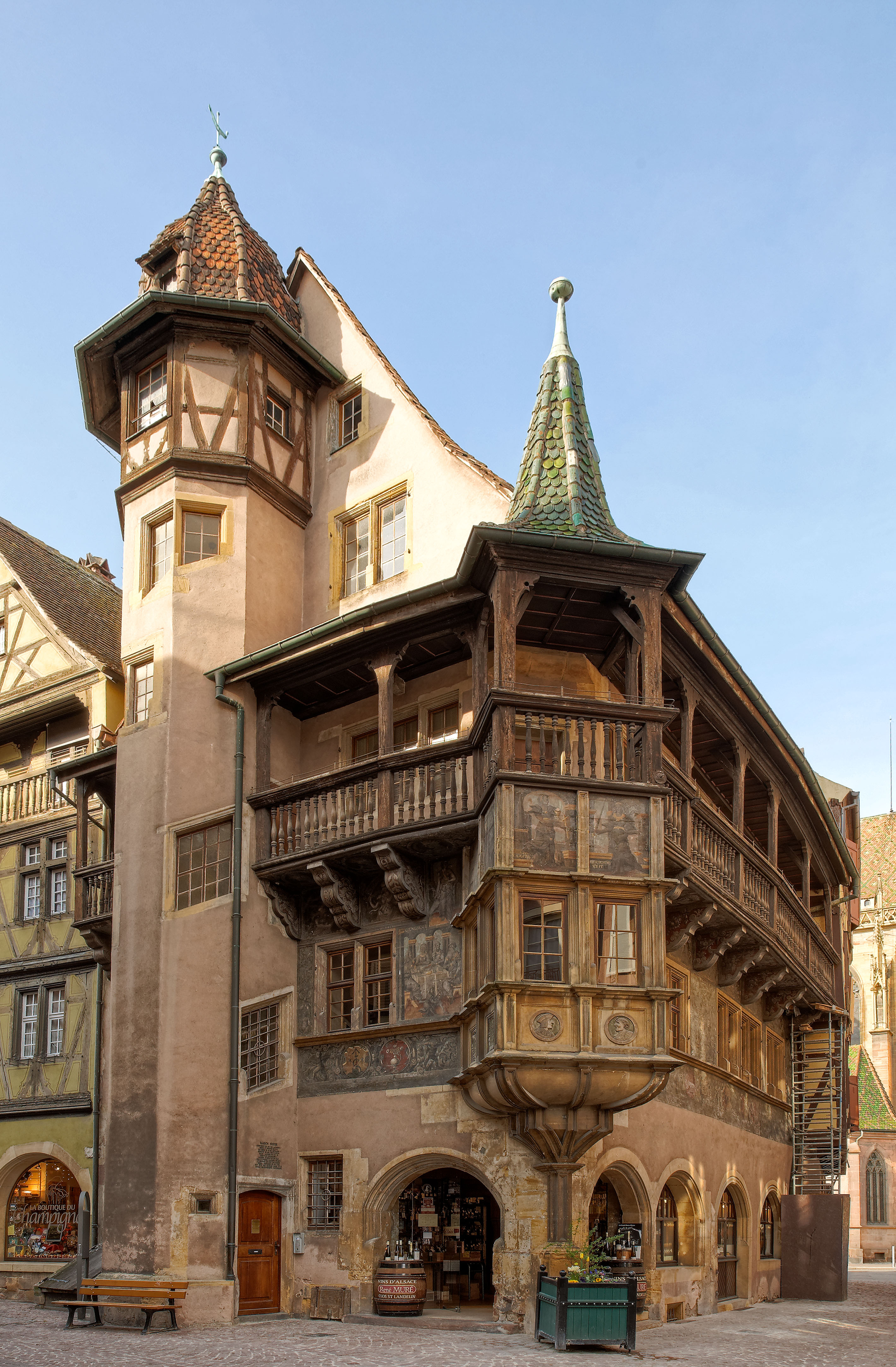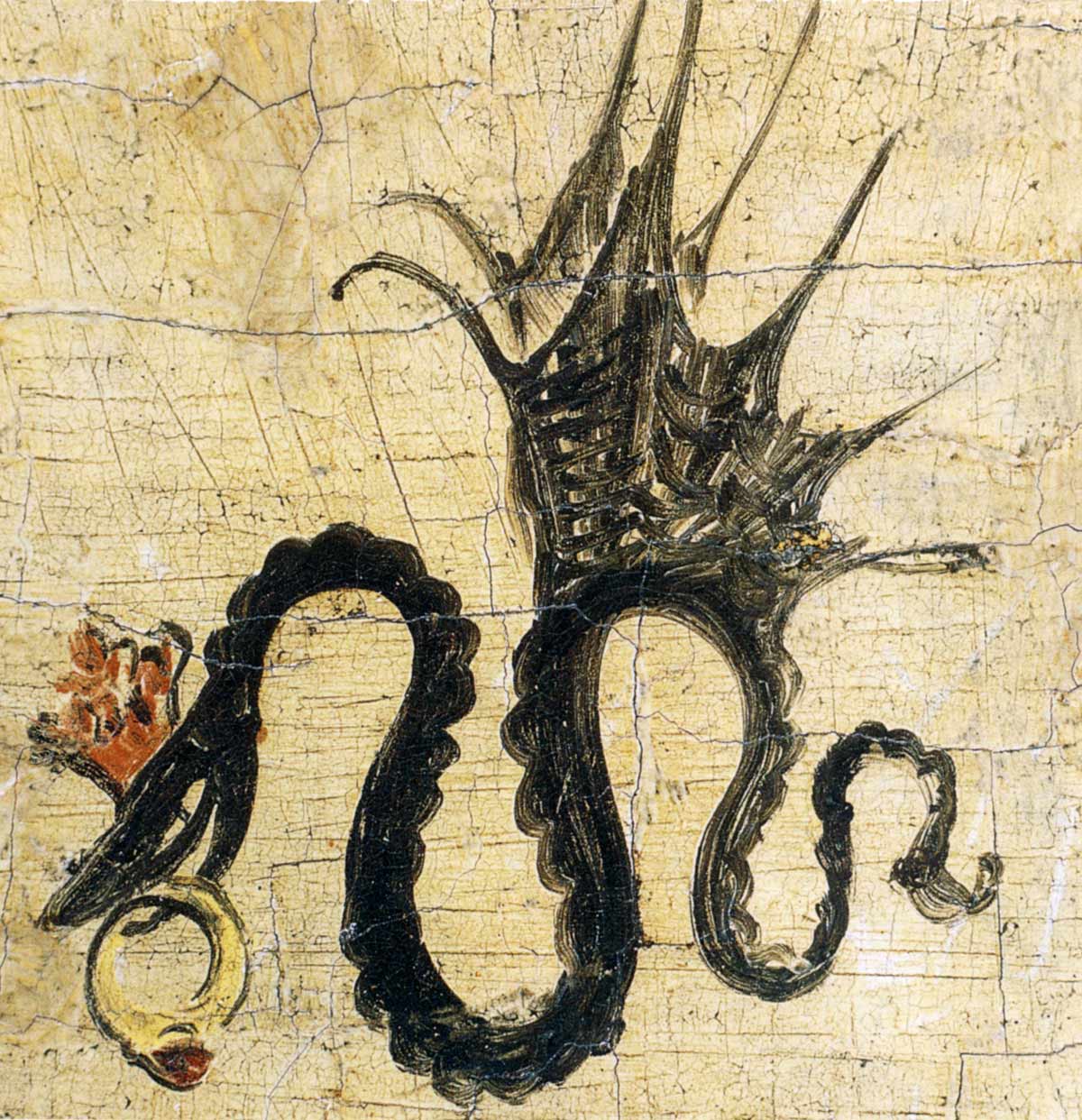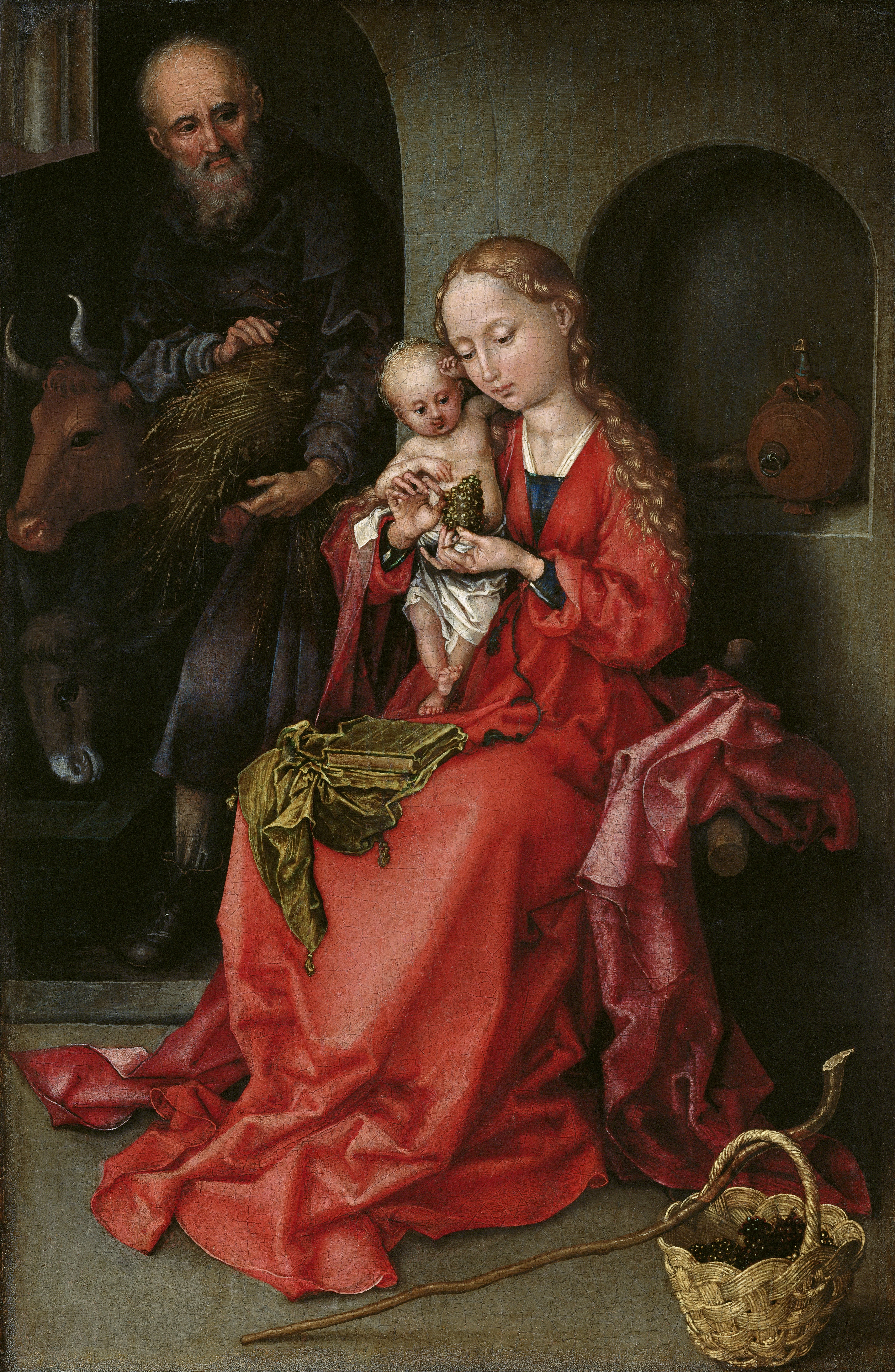|
Musée D'Unterlinden
The Unterlinden Museum () is located in Colmar, in the Alsace region of France. The museum, housed in a 13th-century Dominican Order, Dominican religious sisters' convent and a 1906 former public baths building, is home to the Isenheim Altarpiece by the German Renaissance painter Matthias Grünewald and features a large collection of local and international artworks and manufactured artifacts from prehistorical to contemporary times. It is a . With roughly 200,000 visitors per year, the museum is the most visited in Alsace. History The museum was established in 1849, the buildings (abandoned following the French Revolution) having been saved by the ''Societé Schongauer'' (founded in 1847 by Louis Hugot) and bequeathed to it by the municipality. The collection at first centered around a Roman mosaic found in Bergheim, Haut-Rhin, still displayed today, and plaster copies of antique sculptures on loan from the Louvre. In 1852, the focus of the collection shifted dramatically, when ... [...More Info...] [...Related Items...] OR: [Wikipedia] [Google] [Baidu] |
Colmar
Colmar (; ; or ) is a city and commune in the Haut-Rhin department and Alsace region of north-eastern France. The third-largest commune in Alsace (after Strasbourg and Mulhouse), it is the seat of the prefecture of the Haut-Rhin department and of the subprefecture of the Colmar-Ribeauvillé arrondissement. The city is renowned for its well-preserved old town, its numerous architectural landmarks and its museums, among which is the Unterlinden Museum, which houses the '' Isenheim Altarpiece''. Colmar is located on the Alsatian Wine Route and considers itself to be the capital of Alsatian wine ('). History Colmar was first mentioned by Charlemagne in his chronicle about Saxon wars. This was the location where the Carolingian Emperor Charles the Fat held a diet in 884. Colmar was granted the status of a free imperial city by Emperor Frederick II in 1226. In 1354 it joined the Décapole city league.G. Köbler, ''Historisches Lexikon der deutschen Länder'', 7th editi ... [...More Info...] [...Related Items...] OR: [Wikipedia] [Google] [Baidu] |
Upper Rhine
Upper Rhine ( ; ; kilometres 167 to 529 of the Rhine) is the section of the Rhine between the Middle Bridge, Basel, Middle Bridge in Basel, Switzerland, and the Rhine knee in Bingen am Rhein, Bingen, Germany. It is surrounded by the Upper Rhine Plain (). Most of its upper section marks the France–Germany border. The Upper Rhine is one of four sections of the river (the others being the High Rhine, Middle Rhine and Lower Rhine) between Lake Constance and the North Sea. The countries and states along the Upper Rhine are Switzerland, France (Alsace) and the German states of Baden-Württemberg, Rhineland-Palatinate and Hesse. The largest cities along the river are Basel, Mulhouse, Strasbourg, Karlsruhe, Mannheim, Ludwigshafen and Mainz. The Upper Rhine was River engineering, straightened between 1817 and 1876 by Johann Gottfried Tulla and made Navigability, navigable between 1928 and 1977. The Treaty of Versailles allows France to use the Upper Rhine for hydroelectricity in the Gra ... [...More Info...] [...Related Items...] OR: [Wikipedia] [Google] [Baidu] |
Jost Haller
Jost Haller was a 15th-century Gothic painter from Alsace, active in the years 1440–1470, first established in Strasbourg, then in Metz, and in Saarbrücken. He is also called The painter of the knights () ot "The painter of knights", or ''Le peintre de chevaliers'' Haller's name was forgotten until 1980, when art historian Charles Sterling rediscovered it and put it on a number of paintings and illuminated manuscripts that were hitherto attributed to anonymous masters, most famously among them the '' Tempelhof Altarpiece'' (ca. 1445) from Bergheim, Haut-Rhin (not to be confused with the Tempelhof district of Berlin!), an oil on panel painting now kept in the Unterlinden Museum in Colmar. Haller is also thought to be the author of the fresco of ''Saint Michael defeating Satan'', high and wide, of St Thomas' Church, Strasbourg. A bridge in Strasbourg, built 2006, is named after Jost Haller. See also * Hans Hirtz, active in Strasbourg at the same time *Master of the Drap ... [...More Info...] [...Related Items...] OR: [Wikipedia] [Google] [Baidu] |
Caspar Isenmann
Caspar (or Kaspar) Isenmann () was a Gothic painter from Alsace. As the municipal painter of his hometown Colmar and the creator of a major altarpiece for the prestigious St Martin's Church, he was an important representative of the Upper Rhenish school of painting of the mid-15th century and a probable master of Martin Schongauer. Life and work Isenmann's dates of birth and death are uncertain. He may have been born around 1410. The Unterlinden Museum of his hometown indicates that he was active around 1430 and died between 1484 and 1490; however the Bibliothèque nationale de France states that Isenmann died on 18 January 1472. Isenmann was first recorded as a painter in 1432. He decorated the municipal counting board in 1433 and became a burgher of Colmar in 1435 or 1436. Nothing is known about his teachers but it is assumed that he may have been apprenticed either to Hans Hirtz of Strasbourg or Konrad Witz of Basel; his art also shows the influence of Rogier van der Wey ... [...More Info...] [...Related Items...] OR: [Wikipedia] [Google] [Baidu] |
Hans Holbein The Elder
Hans Holbein the Elder ( , ; ; – 1524) was a German painter. Life Holbein was born in the free imperial city of Augsburg (Germany), and died in Issenheim, Alsace (now France). He belonged to a celebrated family of painters; his father was Michael Holbein; his brother was Sigmund Holbein (died 1540). He had two sons, both artists and printmakers: Ambrosius Holbein (c. 1494 – c. 1519) and Hans Holbein the Younger (c. 1497 – 1543), who both had their first painting lessons from their father. The date of Holbein's birth is unknown. His name appears in the Augsburg tax books in 1494, superseding that of his father. As early as 1493, Holbein had a following, and he worked that year at the abbey at Weingarten, creating the wings of an altarpiece representing Joachim's Offering, the Nativity of the Virgin Mary's Presentation in the Temple, and the Presentation of Christ. Today they hang in separate panels in the cathedral of Augsburg. Holbein painted richly colored relig ... [...More Info...] [...Related Items...] OR: [Wikipedia] [Google] [Baidu] |
Lucas Cranach The Elder
Lucas Cranach the Elder ( ; – 16 October 1553) was a German Renaissance painter and printmaker in woodcut and engraving. He was court painter to the Electors of Saxony for most of his career, and is known for his portraits, both of German princes and those of the leaders of the Protestant Reformation, whose cause he embraced with enthusiasm. He was a close friend of Martin Luther, and Portrait of Martin Luther (Lucas Cranach the Elder), eleven portraits of that reformer by him survive. Cranach also painted religious subjects, first in the Catholic tradition, and later trying to find new ways of conveying Lutheran religious concerns in art. He continued throughout his career to paint nude subjects drawn from mythology and religion. Cranach had a large workshop and many of his works exist in different versions; his son Lucas Cranach the Younger and others continued to create versions of his father's works for decades after his death. He has been considered the most successfu ... [...More Info...] [...Related Items...] OR: [Wikipedia] [Google] [Baidu] |
Albrecht Dürer
Albrecht Dürer ( , ;; 21 May 1471 – 6 April 1528),Müller, Peter O. (1993) ''Substantiv-Derivation in Den Schriften Albrecht Dürers'', Walter de Gruyter. . sometimes spelled in English as Durer or Duerer, was a German painter, Old master prints, printmaker, and history of geometry#Renaissance, theorist of the German Renaissance. Born in Free Imperial City of Nuremberg, Nuremberg, Dürer established his reputation and influence across Europe in his twenties due to his high-quality List of woodcuts by Dürer, woodcut prints. He was in contact with the major Italian artists of his time, including Raphael, Giovanni Bellini and Leonardo da Vinci, and from 1512 was patronized by Holy Roman Emperor, Emperor Maximilian I, Holy Roman Emperor, Maximilian I. Dürer's vast body of work includes List of engravings by Dürer, engravings, his preferred technique in his later prints, Altarpiece, altarpieces, portraits and self-portraits, watercolours and books. The woodcuts series are stylist ... [...More Info...] [...Related Items...] OR: [Wikipedia] [Google] [Baidu] |
Woodcut
Woodcut is a relief printing technique in printmaking. An artist carves an image into the surface of a block of wood—typically with gouges—leaving the printing parts level with the surface while removing the non-printing parts. Areas that the artist cuts away carry no ink, while characters or images at surface level carry the ink to produce the print. The block is cut along the wood grain (unlike wood engraving, where the block is cut in the end-grain). The surface is covered with ink by rolling over the surface with an ink-covered roller ( brayer), leaving ink upon the flat surface but not in the non-printing areas. Multiple colours can be printed by keying the paper to a frame around the woodblocks (using a different block for each colour). The art of carving the woodcut can be called ''xylography'', but this is rarely used in English for images alone, although that term and ''xylographic'' are used in connection with block books, which are small books containing text ... [...More Info...] [...Related Items...] OR: [Wikipedia] [Google] [Baidu] |
Engraving
Engraving is the practice of incising a design on a hard, usually flat surface by cutting grooves into it with a Burin (engraving), burin. The result may be a decorated object in itself, as when silver, gold, steel, or Glass engraving, glass are engraved, or may provide an Intaglio (printmaking), intaglio printing plate, of copper or another metal, for printing images on paper as prints or illustrations; these images are also called "engravings". Engraving is one of the oldest and most important techniques in printmaking. Wood engravings, a form of relief printing and stone engravings, such as petroglyphs, are not covered in this article. Engraving was a historically important method of producing images on paper in artistic printmaking, in mapmaking, and also for commercial reproductions and illustrations for books and magazines. It has long been replaced by various photographic processes in its commercial applications and, partly because of the difficulty of learning the techni ... [...More Info...] [...Related Items...] OR: [Wikipedia] [Google] [Baidu] |
Martin Schongauer
Martin Schongauer (c. 1450–53, Colmar – 2 February 1491, Breisach), also known as Martin Schön ("Martin beautiful") or Hübsch Martin ("pretty Martin") by his contemporaries, was an Alsatian engraver and painter. He was the most important printmaker north of the Alps before Albrecht Dürer, a younger artist who collected his work. Schongauer is the first German painter to be a significant engraver, although he seems to have had the family background and training in goldsmithing which was usual for early engravers. The bulk of Schongauer's surviving production is 116 engravings, all with his monogram but none dated, which were well known not only in Germany, but also in Italy and even made their way to England and Spain. Vasari says that Michelangelo copied one of his engravings, in the '' Trial of Saint Anthony''. His style shows no trace of Italian influence, but a very clear and organised Gothic, which draws from both German and Early Netherlandish painting. Recent ... [...More Info...] [...Related Items...] OR: [Wikipedia] [Google] [Baidu] |
Gilbert Meyer
Gilbert Meyer (26 December 1941 – 21 September 2020) was a French politician who served as a deputy in the National Assembly from 1993 to 2007, and Mayor of Colmar from 1995 to 4 July 2020. Biography Meyer was born on 26 December 1941 in Dessenheim. From 1993 to 2007, Meyer was a member of the National Assembly for Rally for the Republic. On 1995, he became Mayor of Colmar. In May 2020, Meyer who had been diagnosed with cancer, suffered a stroke. On 4 July 2020, Éric Straumann Éric Straumann (born 17 August 1964 in Colmar) is a French politician of the The Republicans (France), Republicans who served as a member of the National Assembly of France, National Assembly from 2007 until 2020, representing the Haut-Rhin depa ... was appointed to succeed him as mayor. He died on 21 September 2020 aged 78. References 1940s births 2020 deaths Mayors of places in Grand Est People from Haut-Rhin 20th-century mayors of places in France 21st-century mayors of places in Fr ... [...More Info...] [...Related Items...] OR: [Wikipedia] [Google] [Baidu] |







